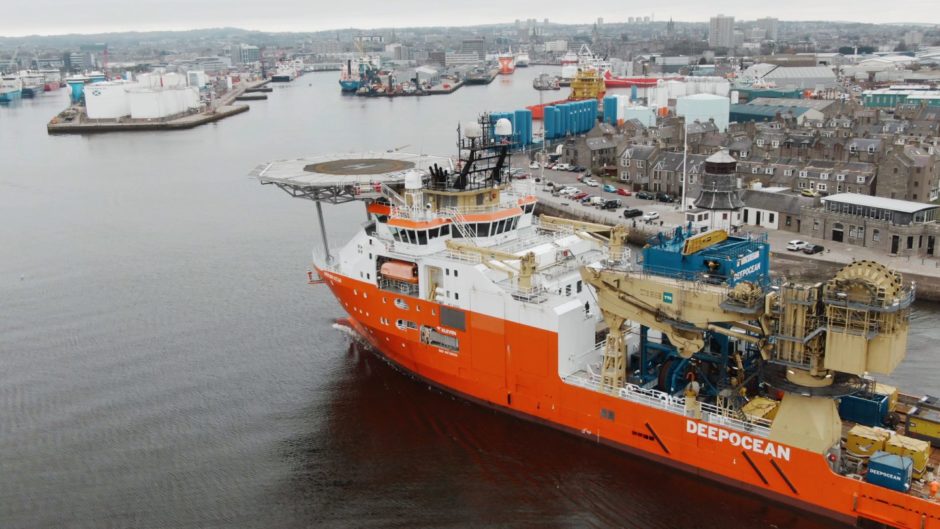
Aberdeen Harbour Board (AHB) said it has “weathered the storm” of downturn caused by the pandemic despite taking a hit on revenues.
Harbour bosses revealed turnover fell 13% to £33 million in 2020, as the number of vessels coming in to port dropped.
In its strategic report for the year to the end of December, just over 6,100 vessels entered the port in the same period, a decline of 35%. The downturn affected the number of oil and gas supply vessels although the number of larger tonnage ships, including general goods and dive support vessels, remained less volatile, the board said.
However, impact of the Covid crisis on passenger numbers in 2020 was even greater.
Around 64,000 passengers transferred through the port, representing a 63% fall compared to record numbers in 2019.
Though Serco Northlink Ferry services continued throughout the year, AHB said physical distancing and travel restrictions had a severe impact on available capacity.
The board confirmed there was no cruise traffic throughout the year.
Rental income remained relatively stable, the group said, adding the board took a decision to support tenants by discounting operational rents and offering rental holidays for office premises for a four-month period during the initial lockdown.
As a result, the level of property occupied decreased only by 3.8% compared to 2019.
The board admitted the completion of the £350m South Harbour development will be a full two years late by the time it is completed next year.
It said delays were due to “a combination of technical issues in the early stages of the project and the impact of the Covid-19 pandemic that closed the site and led to the departure of the principal contractor”.
Spanish ports specialist Dragados pulled out of the scheme last year.
The board added work resumed in June 2020 and “most of the significant marine works are now complete, though the risk of further delay remains with the continued pandemic uncertainty”.
The report insisted the post-Brexit trading landscape held “potential for UK Ports, and for Aberdeen Harbour”.
Likewise, the board lauded plans for the controversial Energy Transition Zone adjacent to the new South Harbour which was allocated £27 million in the recent UK budget, describing it as “a key enabler for the growth of future harbour business”.
It said: “There has been no change to the requirement for large-scale marine infrastructure to accommodate the renewables industry, in particular offshore and floating wind activities, and to create a natural home for energy transition activities.
“Our aim to become the UK’s energy port remains as strong a goal today as it did when this vision was first conceived.
“The combined quayside of North and South Harbour will make us the largest berthage port in Scotland and this considerable component in building Scotland’s international trading capability, will enable Aberdeen to become an increasingly intrinsic driver for growth within the Scottish economy as a whole.”
AHB’s profit for the year after tax slumped £3.9m to £11.9m in the year.
As a Trust Port, the business must retain all profits for reinvestment in harbour developments for the benefit of stakeholders.
The board did not disclose pre-tax profits or employee numbers which will be confirmed when it releases its full report and accounts for the year to the end of 2020.
The report said the “diverse nature of the businesses that support our operations has meant that a solid core of revenue remained unaffected which, together with careful cost management, allowed the board to weather the storm”.
Bob Sanguinetti, the current chief executive of the UK Chamber of Shipping, will take over from chief executive Michelle Handforth in September.
Recommended for you

